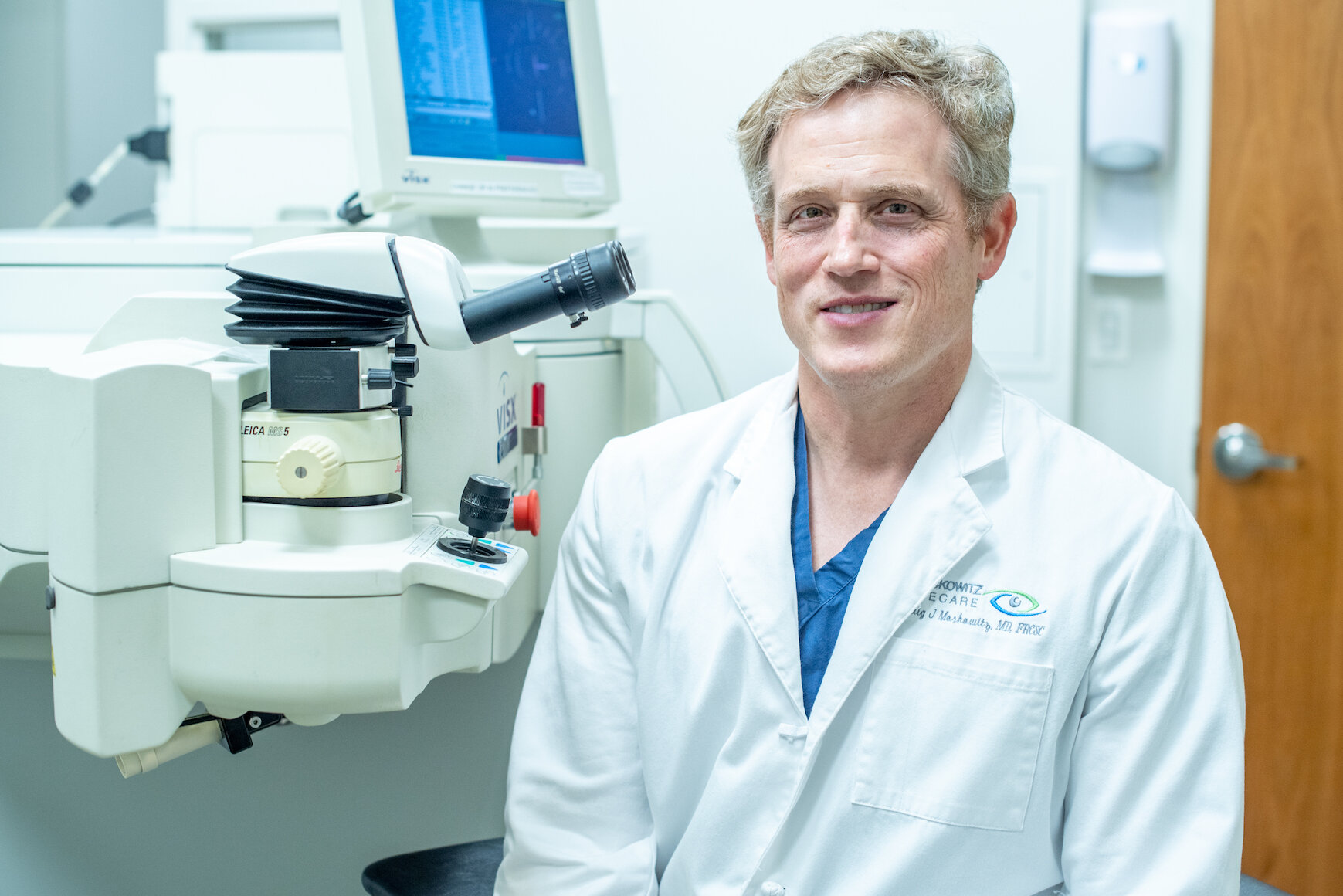
Cataract Surgery
Serving New York City
A cataract is a clouding of the eye’s natural lens, which lies behind the iris and the pupil.
Cataracts are the most common cause of vision loss in people over age 40 and is the principal cause of blindness in the world. In fact, there are more cases of cataracts worldwide than there are of glaucoma, macular degeneration and diabetic retinopathy combined, according to Prevent Blindness America (PBA).
Today, cataracts affect more than 22 million Americans age 40 and older. And as the U.S. population ages, more than 30 million Americans are expected to have cataracts by the year 2020, PBA says.
Cataract surgery is the most effective and safest eye surgery performed today. There are over 3 million surgeries performed each year, giving patients clearer vision and improved quality of life.
What are the symptoms of cataract?
A cataract starts out small and at first has little effect on your vision. You may notice that your vision is blurred a little, like looking through a cloudy piece of glass or viewing an Impressionist painting.
Hazy, blurred vision may mean you have a cataract.
A cataract may make light from the sun or a lamp seem too bright or glaring. Or you may notice when you drive at night that the oncoming headlights cause more glare than before. Colors may not appear as bright as they once did.
The type of cataract you have will affect exactly which symptoms you experience and how soon they will occur. When a nuclear cataract first develops, it can bring about a temporary improvement in your near vision, called “second sight.”
Unfortunately, the improved vision is short-lived and will disappear as the cataract worsens. On the other hand, a subcapsular cataract may not produce any symptoms until it’s well-developed.
What causes a cataract?
The lens inside the eye works much like a camera lens, focusing light onto the retina for clear vision. It also adjusts the eye’s focus, letting us see things clearly both up close and far away.
The lens is mostly made of water and protein. The protein is arranged in a precise way that keeps the lens clear and lets light pass through it.
But as we age, some of the protein may clump together and start to cloud a small area of the lens. This is a cataract, and over time, it may grow larger and cloud more of the lens, making it harder to see.
No one knows for sure why the eye’s lens changes as we age, forming cataracts. But researchers worldwide have identified factors that may cause cataracts or are associated with cataract development. Besides advancing age, cataract risk factors include:
Ultraviolet radiation from sunlight and other sources
Diabetes
Hypertension
Obesity
Smoking
Prolonged use of corticosteroid medications
Statin medicines used to reduce cholesterol
Previous eye injury or inflammation
Previous eye surgery
Hormone replacement therapy
Significant alcohol consumption
High myopia
Family history
How to treat a cataract?
Many people consider poor vision an inevitable fact of aging, but cataract surgery is a simple, relatively painless procedure to regain vision.
Cataract surgery is very successful in restoring vision. In fact, it is the most frequently performed surgery in the United States, with more than 3 million Americans undergoing cataract surgery each year, according to PBA.
Nine out of 10 people who have cataract surgery regain very good vision, somewhere between 20/20 and 20/40.
During surgery, the surgeon will remove your clouded lens and replace it with a clear, plastic intraocular lens (IOL).
New IOLs are being developed all the time to make the surgery less complicated for surgeons and the lenses more helpful to patients. Presbyopia-correcting IOLs potentially help you see at all distances, not just one.
How is the procedure done?
About one to two weeks before your surgery, your doctor will perform tests to determine the proper prescription of the implant lens. You and your doctor will discuss your lifestyle and vision needs to best determine your choice of IOL.
Cataract surgery is an outpatient procedure and usually lasts about one half hour. A local anesthetic is used to numb the area, and you may be given a sedative to help you relax.
Cataract surgery is done by a procedure called Phacoemulsification, or Phaco. A small incision is made on the side of the cornea, the clear, dome-shaped surface that covers the front of the eye. Your doctor then inserts a tiny probe into the eye. This device emits ultrasound waves that soften and break up the lens so that it can be removed by suction.
Your doctor will then remove the cataract and replace it with your new IOL. Since the incision is small, it is self healing and usually does not require suture closure. Immediately after surgery, your vision may be blurry and your doctor will have you use eye drops to help the healing process. You can expect your vision to begin improving within a few days. You will set up appointments to see your doctor to monitor your progress. Most cataract surgery patients are able to return to normal daily function very soon after surgery.
Problems and complications of cataract surgery are minimal, but every surgery is serious and has its risks and you should discuss these and other potential complications with your doctor.
Through advances in both cataract surgery and Premium IOLs, nearly all people are experiencing full restoration of their vision more than ever before. There are many different types of intraocular lenses available for implantation, including monofocal, toric, and multifocal and accommodating intraocular lenses.
